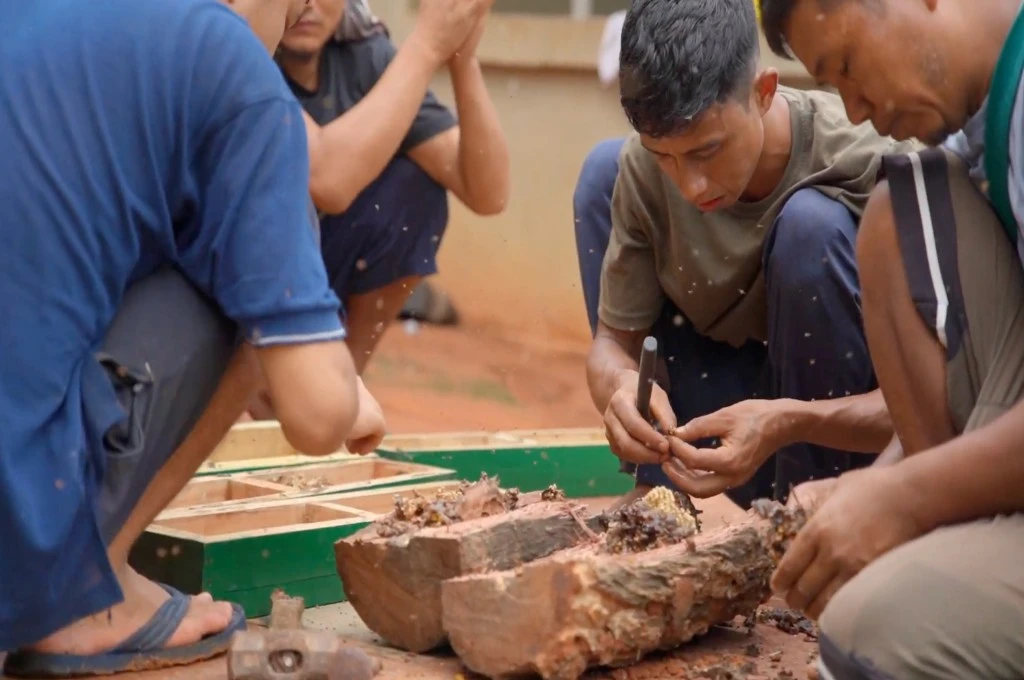The village of Oukhoo, located a few kilometres from Pulwama town in South Kashmir, has long been known as the ‘pencil village of India’. Approximately 90 percent of the pencils produced in India originate here. However, the village’s once-flourishing pencil industry now stands at a crossroads, struggling with a severe shortage of poplar wood—the primary raw material for pencil slats.
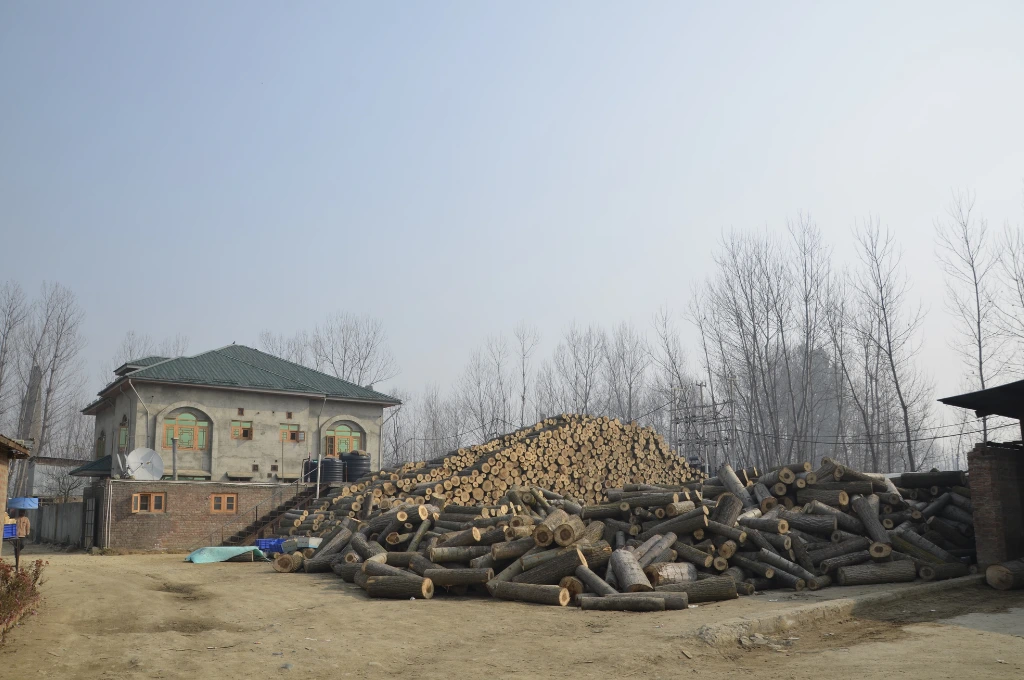
Inside one of Oukhoo’s units, 24-year-old Nazrana Farooq is focused on trimming poplar wood blocks into thin slats. “Children [across India] are able to complete their assignments and make notes because of the workers here,” she says. “We feel proud to make pencils for the country. But due to the shortage of raw materials, our incomes are dwindling.”
She adds, “If the government does not start poplar afforestation, we will be rendered jobless in the future.”


The pencil-making process is labour-intensive. Workers, many of whom are women, spend hours turning large poplar logs into smooth slats. The work begins with buying logs in bulk, which are then chopped, sliced into 5.2-mm-thick wooden slats of specific dimensions (78×77 cm), and either sun- or machine-dried. These slats are then packed—800 per bag—and sent for final processing to units in Jammu, Chandigarh, and other parts of India.

But the source of these logs is dwindling. In 2020, the Jammu and Kashmir government issued an order to remove approximately 42,000 Russian poplar trees, which were blamed for the spread of infection during the COVID-19 pandemic. Researcher and botanist Junaid Quyoom contests this framing: “There is no scientific proof that poplar trees spread infections. On the contrary, trees are known to provide us with oxygen and improve lung capacity.”
Mohammad Ashraf Matta, a 36-year-old contractor from Bandipora, says, “Poplars that flower in April-May are believed to spread respiratory infections. But it may just be due to seasonal change. People are now planting apple trees instead. Following the government order, lakhs of trees along riverbanks and natural streams have been cut down.”
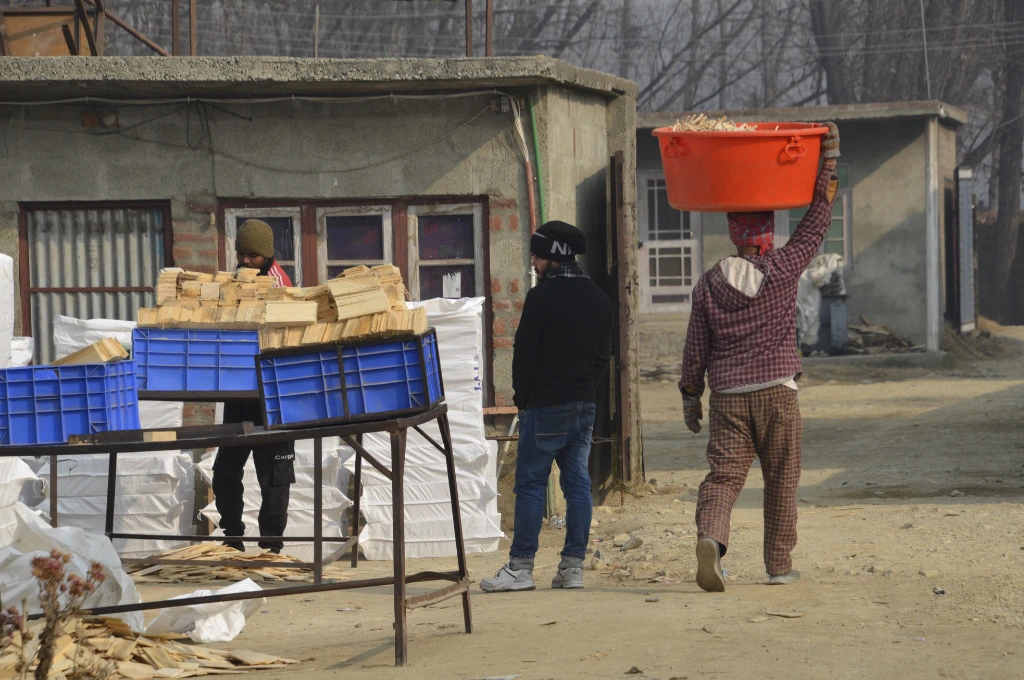
Farooq Ahmad Dar, who has worked in the industry since 2013, explains, “Growing a poplar tree takes approximately 20 years, and we’ve now lost most of them. The government should run awareness programmes and motivate people to plant poplars, or develop high-density varieties that mature in five to six years.”
The impact of this raw material shortage is already visible. “In winter, we encounter more shortages, sometimes leading to work stoppages for several days. Earlier, we had substantial work. Now we’re cutting down our workforce,” Farooq says.

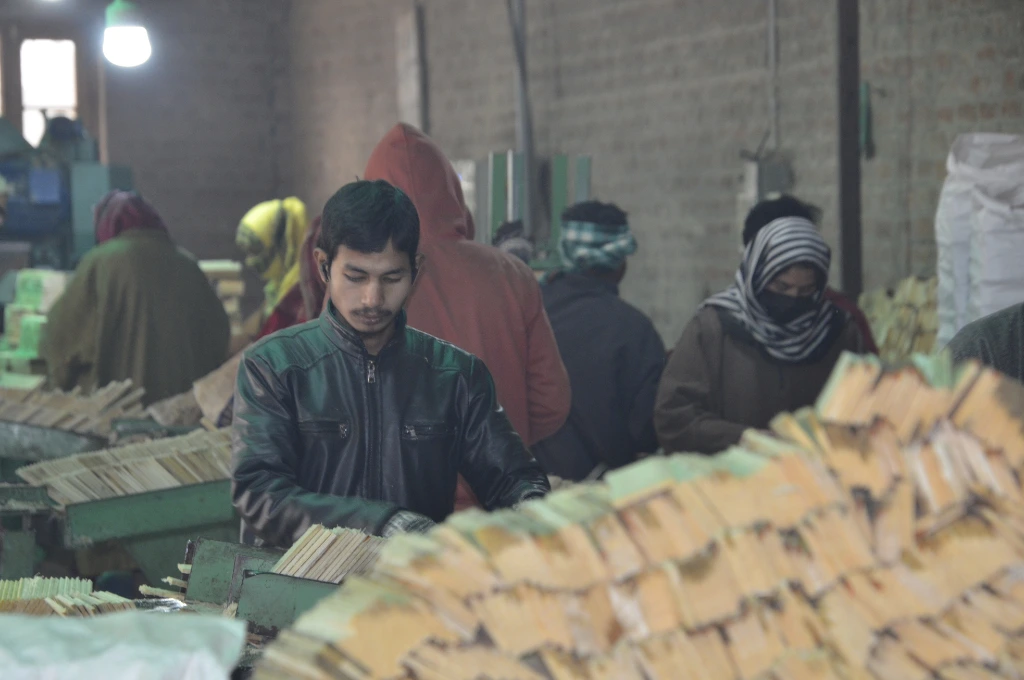
Oukhoo was once home to 17 pencil manufacturing units that employed between 2,000 and 3,000 workers, both local and migrant. This number has since declined significantly. Today, only around nine of these factories remain operational. Ali Mohammad, a 43-year-old Oukhoo resident, says, “Earlier, these factories provided us with jobs and income. But the situation is changing. Many workers have already lost their jobs.”
At present, Jhelum Agro Industries, one of the bigger factories in the area, employs only about 100 people. Fatima Nabi, 27, is one of approximately 30 young women working there. “Most of us come from low-income families. Some are orphans. This work is how we support ourselves and our families.”

Naseema Begum, 25, who has been working at the Jhelum Agro unit for several years, says, “We’ve managed heavy workloads for a long time. But now, the shortage of raw materials makes us uncertain if we’ll have jobs tomorrow.” She points out a deeper concern—lack of afforestation. “For every 10 trees cut, only one is planted. How can we justify cutting down trees that support us?”
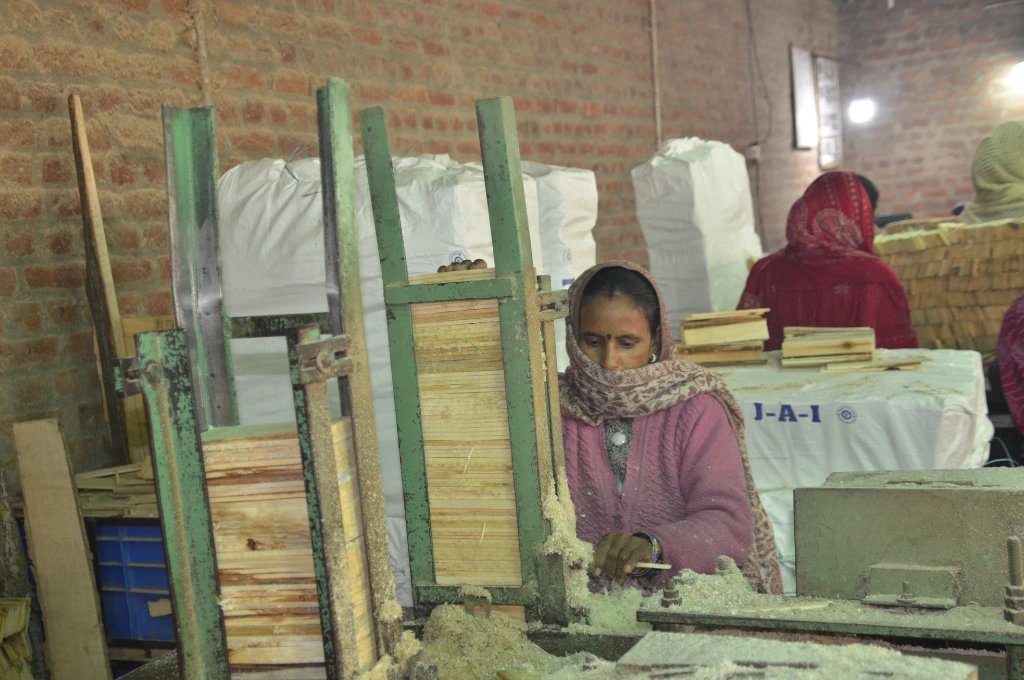
Despite these challenges, many still find dignity in their work. “Our pencils have been exported to approximately 85 countries,” says Farooq. “We supply to Hindustan Pencils, the largest pencil manufacturer in India. There’s a 70 percent chance that the pencil you are holding was made in Oukhoo.”
Without a long-term solution—such as the mass plantation of fast-growing poplars and consistent raw material supply—India’s pencil village could lose more than just a title. It could cost thousands their livelihoods.
—
Know more
- Read about the innovative ways Kashmir’s saffron growers are adapting to climate pressures through indoor farming.
- Learn how deforestation threatens the Kashmiri willow bat industry.
- Read how forest loss is threatening habitats and biodiversity in Dachigam National Park.




